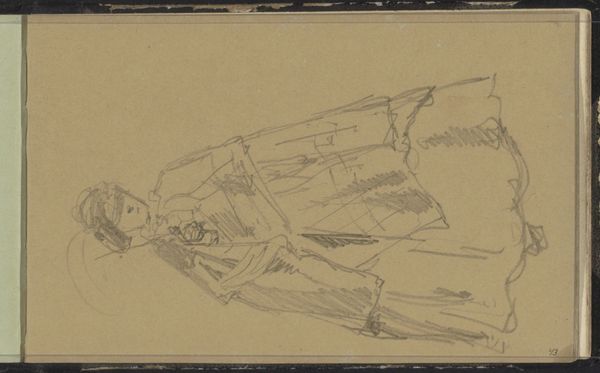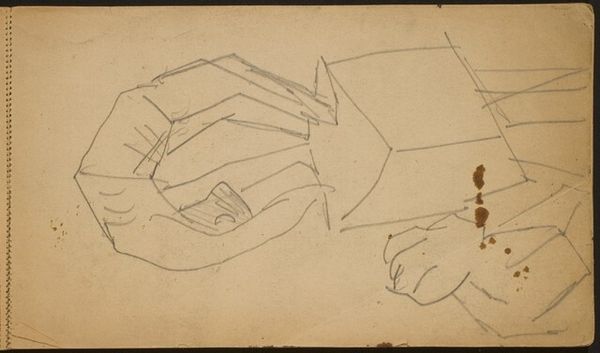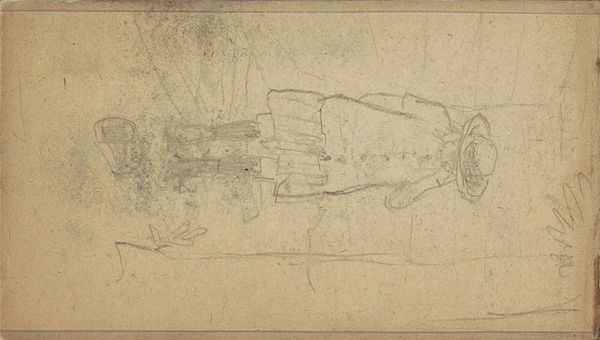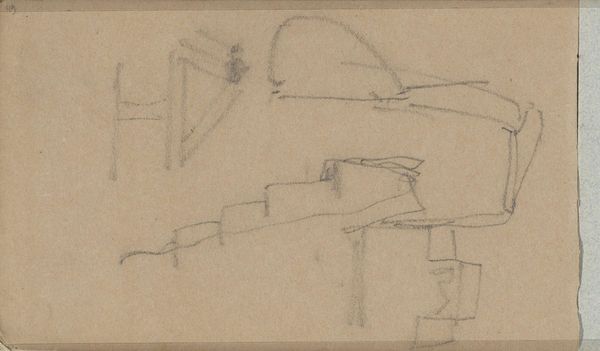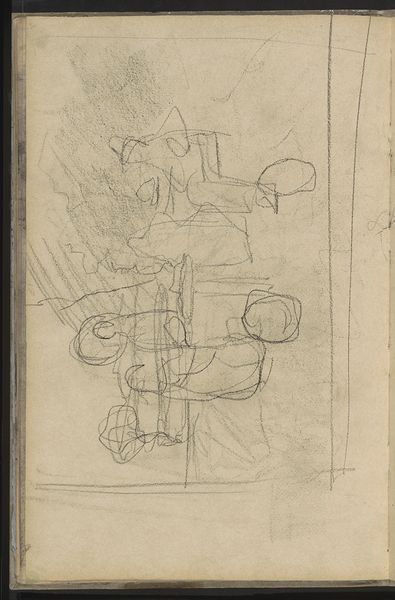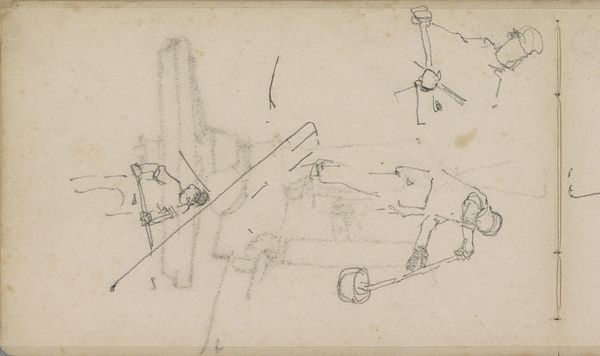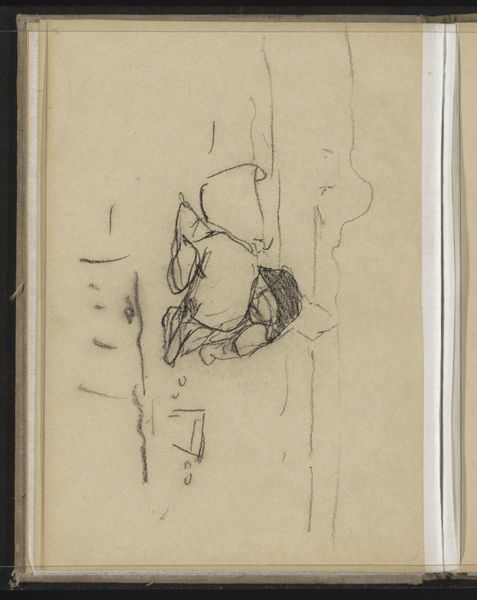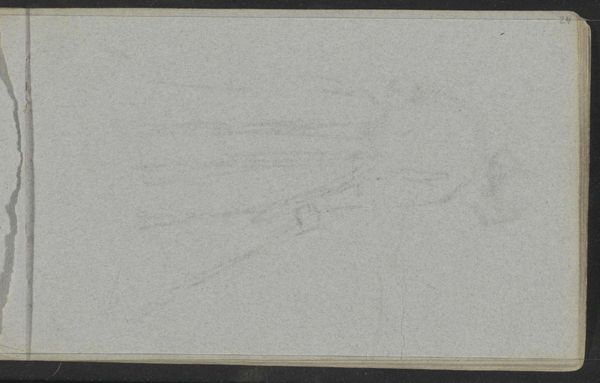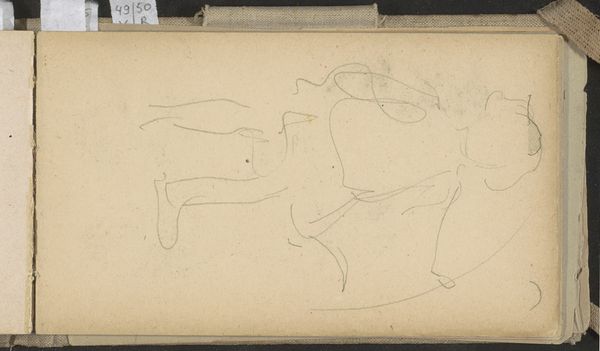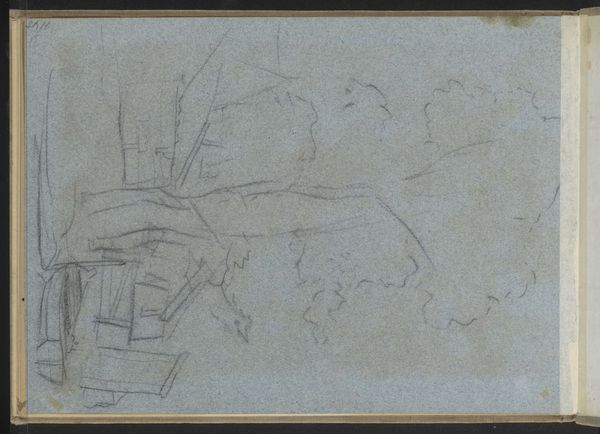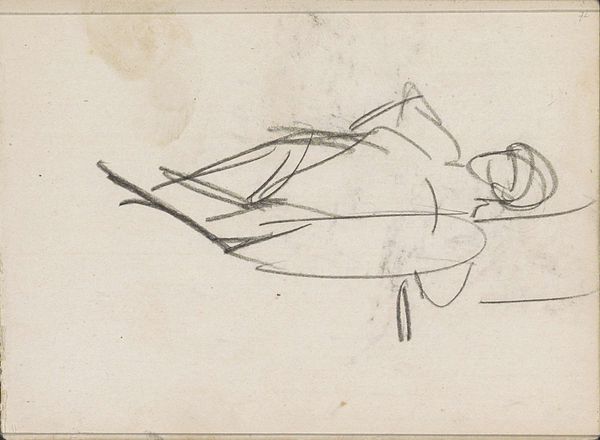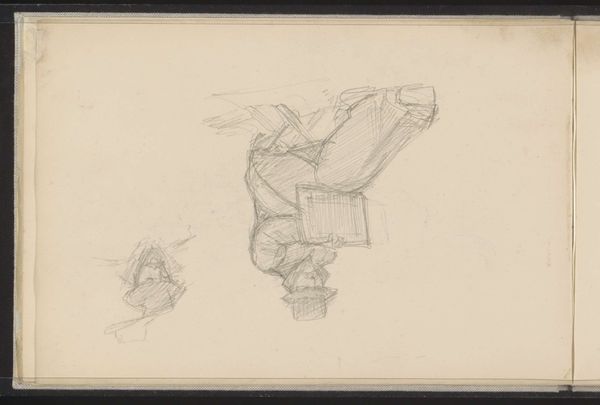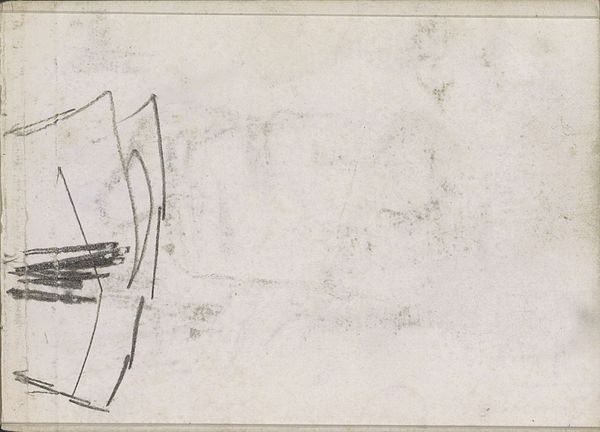
#
toned paper
#
ship
#
incomplete sketchy
#
personal sketchbook
#
character sketch
#
ink drawing experimentation
#
underpainting
#
sketchbook drawing
#
watercolour illustration
#
sketchbook art
#
watercolor
Copyright: Rijks Museum: Open Domain
Curator: Looking at this work from Johanna van de Kamer, dated between 1890 and 1922 and titled "Koetsier," I immediately think about journey. Editor: It’s sparse, isn't it? Almost ghostly. The sketchiness lends it this ephemeral quality, like a half-remembered dream. I’m immediately struck by how unresolved it feels. Curator: The incomplete nature of the drawing allows us to participate, doesn't it? To fill in the blanks. The lines themselves, though quickly drawn, carry a symbolic weight. Think of ships as symbols of exploration, migration, trade...it hints at immense historical and societal shifts. Editor: And what about the "Koetsier," the coachman? That figure is completely absent. Is that absence deliberate? Given the era, could this connect to early feminist readings of labor, a commentary on the invisibility of certain kinds of work or even a critique of societal structures and power dynamics within transportation networks? Curator: The absence certainly amplifies that potential. The symbolism isn't just in what's visible, but also in what isn't. A ship needs a captain, a direction. And you rightly point out that it’s hinting at power and labour relationships as much as geographical transit. Perhaps van de Kamer is illustrating how easily we forget the individuals at the helm? Editor: Precisely. Moreover, sketchbooks are profoundly personal, almost diaristic spaces, so what does it say about the artist that they chose to capture a subject relating to labor but left it open for our interpretation? The spontaneity of watercolor and ink gives it immediacy; perhaps they are posing questions regarding society for themselves and for those looking after them. Curator: The incomplete lines give a certain impression. Watercolors, known for the subtleties in conveying moods, carry the impression of water itself, its mutability. What we have is something still very fresh and active in their personal exploration through line, shape, and light. It’s an artifact of an artist processing the world. Editor: A powerful processing indeed, it seems deceptively simple at first glance, but opens into deeper readings about representation and historical dynamics that can echo profoundly into today. Curator: Indeed. It's a simple work that continues to open and offer more questions the longer one considers it.
Comments
No comments
Be the first to comment and join the conversation on the ultimate creative platform.
